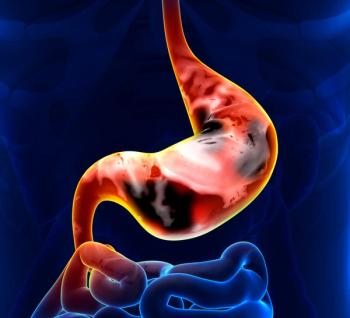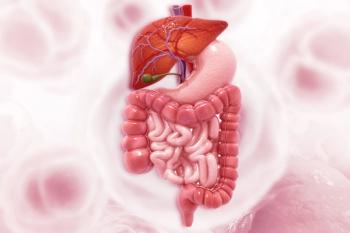
PEGPH20 Could Improve Metastatic Pancreatic Cancer Outcomes
Adding PEGPH20 to nab-paclitaxel and gemcitabine improved progression-free survival in patients with untreated, metastatic pancreatic ductal adenocarcinoma.
Adding PEGPH20 to nab-paclitaxel and gemcitabine improved progression-free survival in patients with untreated, metastatic pancreatic ductal adenocarcinoma, according to a new study.
Hyaluronan (HA) is a naturally occurring polysaccharide. “HA is secreted in excessive amounts in many pancreas cancers into the interstitium,” said Sunil R. Hingorani, MD, PhD, of the Fred Hutchinson Cancer Research Center in Seattle. PEGPH20, a pegylated form of recombinant human hyaluronidase PH20, has been shown in preclinical studies to degrade intratumoral HA. The subsequent decrease in fluid pressures can improve blood flow, allowing better drug delivery to the tumor bed.
Hingorani presented results of the HALO-202 study (
The study met its primary endpoint, with a median progression-free survival with PEGPH20 of 6 months, compared with 5.3 months without it. This yielded a hazard ratio (HR) of 0.73 (95% CI, 0.53–0.99; P = .045). Though the number of patients was small, specifically in HA-high patients the median PFS was 9.2 months with PEGPH20 and 5.2 months without it, for an HR of 0.51 (95% CI, 0.26–1.00; P = .048).
The overall response rate was 40% with PEGPH20, and 33% with nab-paclitaxel and gemcitabine alone. In HA-high patients, these rates were 45% and 31%, respectively. The median overall survival was not significantly different between the groups, at 11.5 months with the study drug and 8.5 months without it.
Hingorani said the trial also met its primary safety endpoint of a substantially decreased and normalized thromboembolic event rate. In the first stage of the study, no thromboprophylaxis was given, and the PEGPH20 patients had an event rate of 43%; the nab-paclitaxel/gemcitabine patients had a rate of 25%. In a second stage, patients treated with 40 mg/day of enoxaparin had rates of 28% with PEGPH20 and 29% without it. Those treated with enoxaparin at a dose of 1 mg/kg/day saw the thromboembolic event rate fall even farther, to 10% with PEGPH20 and 6% without it.
Hingorani said that these data support the underlying hypothesis and the ongoing phase III HALO-301 trial, which focuses only on HA-high patients. The ASCO discussant for the session, E. Gabriela Chiorean, MD, also of the Fred Hutchinson Cancer Research Center, stressed that the agent should only be studied in those with high HA expression, which includes more than 50% of patients based on immunohistochemistry.
“PEGPH20 is one of the first novel targeted therapies rigorously studied preclinically which demonstrated benefit for patients with pancreatic cancer,” she said.
Newsletter
Stay up to date on recent advances in the multidisciplinary approach to cancer.

















































































